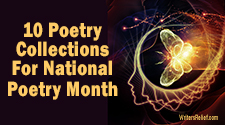
When you’re writing a story, be it a short story or a full-length novel, you will have to decide on the point of view. What is the best point of view for a book or story? Whose point of view will engage the reader most effectively? Writer’s Relief offers the following hints and tips.
What Is Point Of View In Books And Stories? Point of view (sometimes abbreviated as POV in writing groups) can be defined as the narrative perspective from which a story or novel is told.
First Person Point Of View:
Many editors and publishers will tell you that a novel written from the first person point of view (I, we) is often a sign of an inexperienced writer, and—toss!—into the trash it goes. Check your local bookstore and take note of how many best-sellers are written in first person. They exist, but novels are far more often written in third-person narrative, and for good reason.
In first person, the character is also the narrator, either playing a central (active) role or a peripheral (sideline) part. As the first-person narrator, you have but one point of view to offer, and this can be limiting. There’s simply less opportunity to bring depth to the story. On the other hand, a first-person narrative creates an undeniable intimacy with the reader.
Poems and short stories don’t necessarily need to delve into other characters’ viewpoints, thoughts, and feelings, and writing in a first-person narrative works quite well. There are also a great many well-received novels out there written in first person, so don’t let sweeping generalizations deter you from choosing the point of view (POV) that works best for you.
Second Person Point Of View
This is a difficult and uncommon style to pull off successfully. Imagine an entire novel where the character, narrator, or even the reader is referred to as “you.” (“You walk down the street and notice the wide array of street people tucked into corners and alleys.”) Often considered an experimental form, this type of narrative would be nearly impossible to sustain through a full-length novel and would be more successful in a short piece. Examples include “How-To” stories, such as “How to Date a Brown Girl…,” by Junot Diaz.
Third Person Point Of View
Storytelling from a third person point of view (he, she) offers a clear distinction between the author and the characters, allowing the author complete freedom to travel through the story and its characters. The narrator is not a character and can therefore comment on every aspect if so desired.
Omniscient Narrator (Omniscient Point Of View)
Usually reserved for longer fiction, this narrator is all-knowing and can enter any character’s thoughts, interpret any character’s speech or actions, and provide commentary on their backgrounds and motives. As an observer with the knowledge of the characters’ history, the omniscient narrator makes judgments and offers opinions along the way. This is a technique that offers a great deal of freedom for the writer.
Omniscient Narrator (Limited Point Of View)
In this technique, the narrator’s knowledge is limited to one character—the protagonist. Other players are seen only externally. The narrator’s voice takes on the flavor and nuance of the main character, and no other information can be brought in from other sources (characters) other than what is observed through plot and dialogue. This is the most commonly used POV in short stories and novels.
Objective Narrator (Objective Point Of View)
An impersonal POV, the objective narrator offers no opinion and no value judgments, leaving the interpretation of events and dialogue up to the reader. The reader’s knowledge is limited to external descriptions, and the reader is invited to infer his or her own meaning from them.
Once you’ve chosen your point of view, consistency is a matter of personal preference. Switching POVs can cause confusion for the reader and interrupt the flow of the story. If you do choose to use multiple POVs, make it obvious when a new character takes over the storytelling. Use a new section (paragraph, chapter) for a new narrator, perhaps even labeling the section to make it abundantly clear whose point of view it’s coming from.



















thanks, good stuff! A writer should well know, how, and where he’s trying…
sincerely,
I agree, on the whole. I think one area, though, where first person works really well is in certain yuoung adult texts. Another is close third person – the reader can enjoy the growth with the protagonist.
I prefer third person. But perhaps it might be fun telling a story not just as the narrator, but as one who also reacts to what he is seeing.
The unreliable POV was not mentioned in this article. Examples are “The Tell Tale Heart”, “Fight Club”, “American Pyscho”, and “Atonement”.